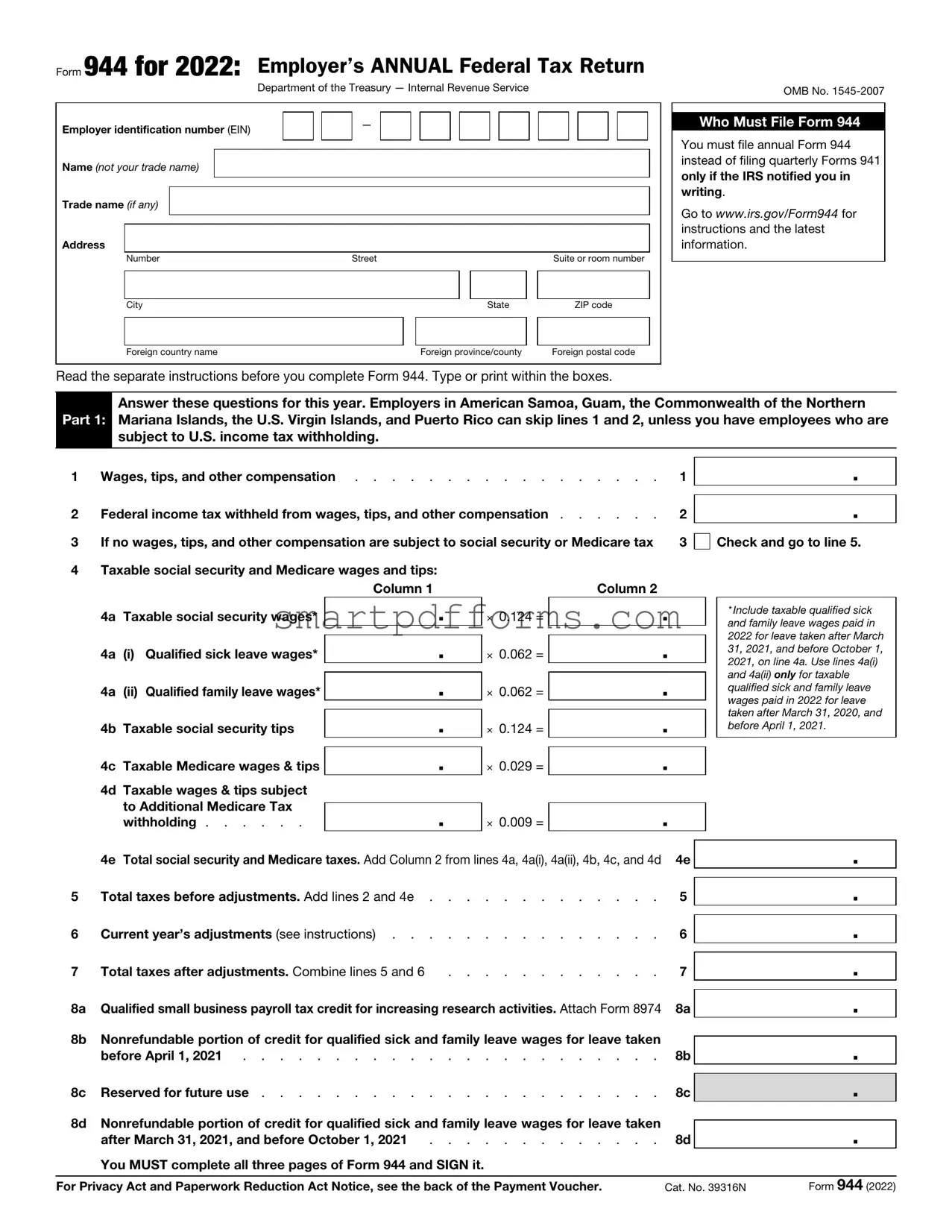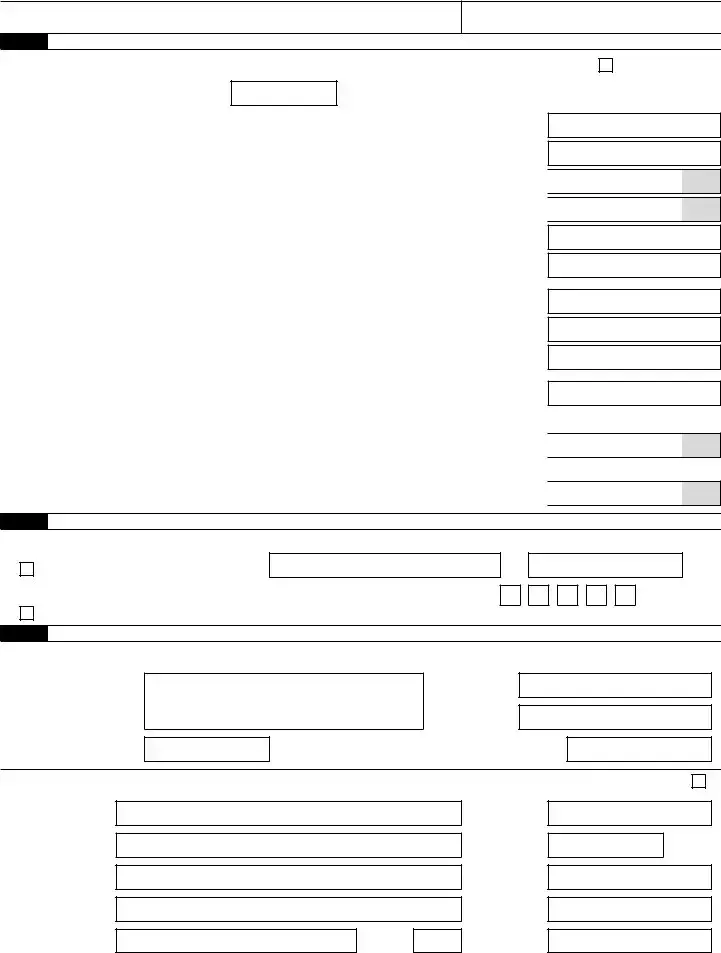Purpose of Form
Complete Form 944-V if you’re making a payment with Form 944. We will use the completed voucher to credit your payment more promptly and accurately, and to improve our service to you.
Making Payments With Form 944
To avoid a penalty, make your payment with your 2022 Form 944 only if one of the following applies.
•Your net taxes for the year (Form 944, line 9) are less than $2,500 and you’re paying in full with a timely filed return.
•Your net taxes for the year (Form 944, line 9) are $2,500 or more and you already deposited the taxes you owed for the first, second, and third quarters of 2022; your net taxes for the fourth quarter are less than $2,500; and you’re paying, in full, the tax you owe for the fourth quarter of 2022 with a timely filed return.
•You’re a monthly schedule depositor making a payment in accordance with the Accuracy of Deposits Rule. See section 11 of Pub. 15, section 8 of Pub. 80, or section 11 of Pub. 179 for details. In this case, the amount of your payment may be $2,500 or more.
Otherwise, you must make deposits by electronic funds transfer. See section 11 of Pub. 15, section 8 of Pub. 80, or section 11 of Pub. 179 for deposit instructions. Don’t use Form 944-V to make federal tax deposits.
Use Form 944-V when making any payment with ▲! Form 944. However, if you pay an amount with CAUTION Form 944 that should’ve been deposited, you
may be subject to a penalty. See section 11 of Pub. 15, section 8 of Pub. 80, or section 11 of Pub. 179 for details.
Specific Instructions
Box 1—Employer identification number (EIN). If you don’t have an EIN, you may apply for one online by visiting the IRS website at www.irs.gov/EIN. You may also apply for an EIN by faxing or mailing Form SS-4 to the IRS. If you haven’t received your EIN by the due date of Form 944, write “Applied For” and the date you applied in this entry space.
Box 2—Amount paid. Enter the amount paid with Form 944.
Box 3—Name and address. Enter your name and address as shown on Form 944.
•Enclose your check or money order made payable to “United States Treasury.” Be sure to enter your EIN, “Form 944,” and “2022” on your check or money order. Don’t send cash. Don’t staple Form 944-V or your payment to Form 944 (or to each other).
•Detach Form 944-V and send it with your payment and Form 944 to the address provided in the Instructions for Form 944.
Note: You must also complete the entity information above Part 1 on Form 944.


 .
.
 .
. .
. .
. .
. .
.
 .
. .
. .
. .
.
